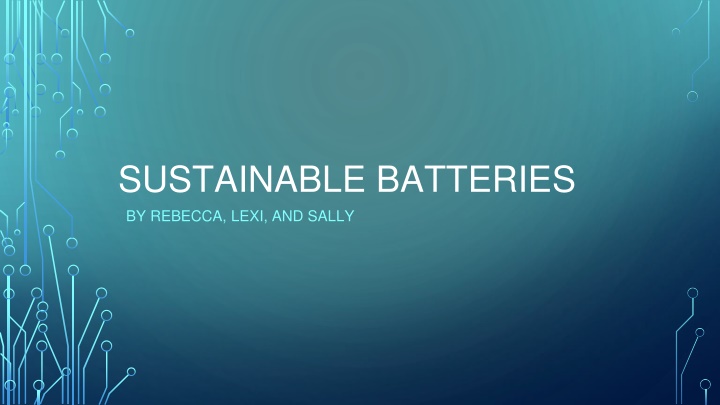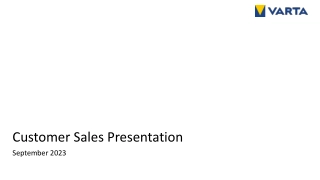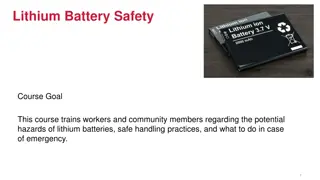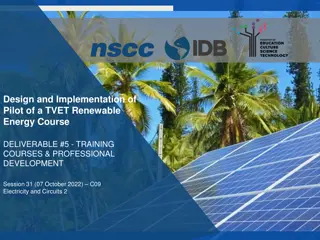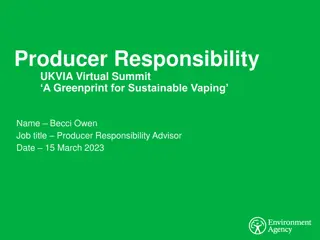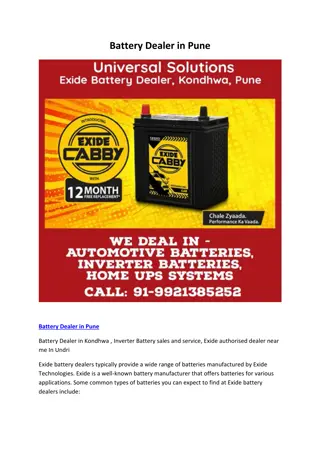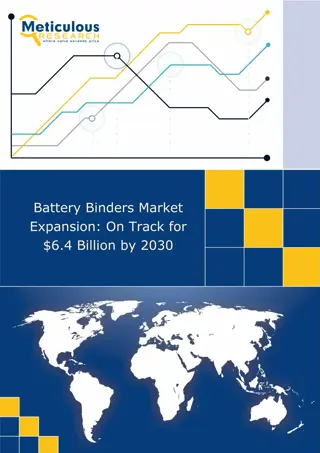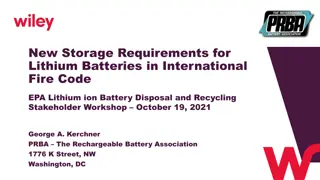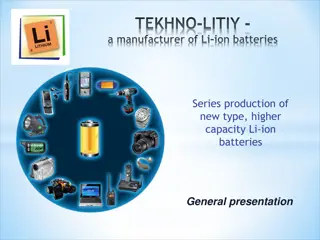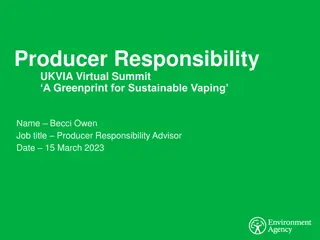Sustainable Batteries for Underdeveloped Regions
Engineers Rebecca, Lexi, and Sally are working on creating sustainable batteries using local coins and fruits to help underdeveloped nations. Their mission is to design efficient batteries that require acidic solutions, reduce hazardous waste, and can power a small light bulb for 15 minutes. The team aims to produce cost-effective battery kits that can be easily assembled in regions with limited access to electricity.
Download Presentation

Please find below an Image/Link to download the presentation.
The content on the website is provided AS IS for your information and personal use only. It may not be sold, licensed, or shared on other websites without obtaining consent from the author.If you encounter any issues during the download, it is possible that the publisher has removed the file from their server.
You are allowed to download the files provided on this website for personal or commercial use, subject to the condition that they are used lawfully. All files are the property of their respective owners.
The content on the website is provided AS IS for your information and personal use only. It may not be sold, licensed, or shared on other websites without obtaining consent from the author.
E N D
Presentation Transcript
SUSTAINABLE BATTERIES BY REBECCA, LEXI, AND SALLY
Why Did We Choose this Topic? We wanted to engineer a battery that could be assembled using local coins and fruits (in a chosen region) that are inexpensive, acidic, and easy to find in order to help underdeveloped nations. A little light could go a long way.
As a team of engineers, our mission is to Create the most efficient and sustainable battery using coins and various acidic drinks Design a kit for an unassembled battery that can be shipped to a region where electricity is not easily accessible Reduce the hazardous waste created by batteries
Product Constraints: 1. Create a project having to do with increasing the sustainability of energy usage 2. Various acidic solutions mixed with salt must be used to make a battery and power a small light bulb 3. The battery must be able to light the light bulb for 15 minutes 4. An easy to access kit must be made to hold the battery 5. The battery kit should be as cost efficient as possible
How will this battery work? Acid Salt Solution: Contains electrolytes (ions) which have positive and negative charges Metals: conductors of electricity that allow the ions to flow through them
Procedure: 1. Pour 10 milliliters of the acidic solution 2. Add 1.3 grams of salt 3. Cut paper towel and foil (if needed) into size of coins 4. Soak the paper towel into the solution 5. Compile the foil, paper, and then coin 6. Record measurements
EXPERIMENT IN ACTION
Test 1: Ranges of Energy Produced by Different Combinations of Coins and Acids (V) Highest Voltages Produced: Grapefruit Juice and US Quarters: 1.00-2.5V Lemon Juice with US Quarters: 1.15-1.6V Lowest Voltages Produced: Orange Juice and Dime/ Lemon Juice and Penny Most Consistent Over Time (does not lose energy fast): Lime Juice with all coins
Test 2: Voltage Produced from Four Quarters and Various Acids with Higher Salt Concentrations (V) Increased the salt concentration since they would not light the light bulb Voltage remained the same/similar to previous trials (no significant differences) Rayovac D battery lights light bulb (has a voltage of 1.5V)
Test 3: Resistance of Battery Rayovac D Battery Resistance: 246 Our battery (grapefruit and four quarters): 264 Rayovac D Battery had a current ours did not due to its higher resistance tried to decrease resistance by varying number of coins from one to ten Optimum Voltage and Low Resistance: Four Quarters: 70-100 and 1.58V (theoretically enough voltage and low enough resistance to light the light bulb) Nothing lit the light bulb need to increase current some other way
Test 4: Nickels and Pennies Researched that nickels and pennies will light the light bulb Replaced tinfoil with pennies and replaced quarters with nickels Trying to increase the current by switching the metals Only used pennies from 1983 to present due to change of composition in 1982 Used four pennies and four nickels with all five solutions No batteries had a high enough voltage best result was vinegar solution with 220 and 0.94 V (this cannot power the battery)
Observations: Coins rusted over time when left in plastic bag with wet paper towels Resistance decreased when the battery was squeezed Voltage decreased when battery was squeezed Holes appeared in tinfoil after testing battery (salt?) Measurement of resistance on the multimeter was very inconsistent Without the foil the structure of the battery was less stable, could potentially be resolved with package
What we have accomplished Reached voltage threshold Surpassed resistance threshold Discovered the optimum combination of coin and acidic solution for voltage using more sustainable materials In the future we can Research compositions of various batteries to discover what our battery is lacking Research ways to increase current Compile a complete kit Create a potential casing for the battery
Works Cited Where Friends & Family Gather for Fun & Fitness. (2015, January 1). Retrieved April 13, 2015, from Build up a Battery + Recharge what you have (2015). Retrieved May 10,2105, from http://bundlr.com/b/build-up-a-battery-recharge-what- you-have Nokero: The Solar Light bulb for Developing Countries (2015). Retrieved May 10, 2015, from http://www.igreenspot.com/nokero-the-solar- light-bulb-for-developing-countries/ Replanting for Madagascar s Future (2015). Retrieved May 10, 2015, from https://www.arborday.org/programs/rainforest/madagascar/ File:United States dime, reverse.jpg (December 6, 2014). Retrieved May 10, 2015, from http://commons.wikimedia.org/wiki/File:United_States_dime,_reverse.jpg Washington quarter (May 11, 2015). Retrieved May 11, 2015, from http://en.wikipedia.org/wiki/Washington_quarter Metals and Materials are Used in US Coins and Banknotes? (2015). Retrieved May 10, 2015, from http://www.azom.com/article.aspx?ArticleID=8088#5 26 fruits (2015). Retrieved May 7, 2015, from http://www.26fruits.co.uk/orange.php Hug it foward (2015) Retrieved May 26, 2015, from http://hugitforward.org/ MMUK Citrus (2015) Retreived May 26, 2015http://www.mmuk.co.uk/citrus
